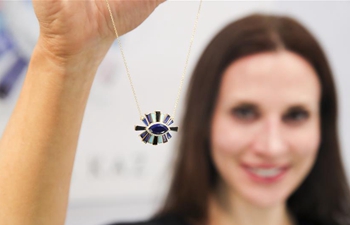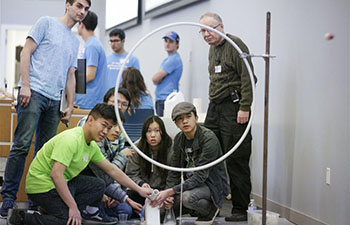by Raul Menchaca
MATANZAS, Cuba, March 12 (Xinhua) -- More than a picturesque repository of 19th-century pharmacology, the antique French apothecary Triolet revives early memories for thousands of Cubans who until not long ago came here seeking remedy for their ailments.
Located in the heart of the western city of Matanzas, the well-preserved apothecary today houses the Pharmaceutical Museum with more than half a million compounds, as well as vintage tools and devices.
"This is an exceptional place ... the world's only French apothecary dating from the end of the 19th century that remains original and complete," according to Marcia Brito, who has been running the museum for 36 years.
Brito has got a degree in biology and been here for four decades to research the formulas contained in 55-volume pharmacopoeia in the drugstore.
These documents are relevant because they indicate the number of prescriptions and the doctors who formulated them, said Brito.
Preserved in pristine shape, the building boasts all its original wood furniture and decoration, hand carved by the Catalonian carpenter Juan Flores.
In addition to featuring beautiful colonial architecture, the pharmacy holds some 800,000 labels, hundreds of thousands of original medicines and a huge collection of French porcelain dating from even before its foundation.
The pharmacy was founded by doctors Juan Fermin Figueroa and Ernesto Triolet Teliebre on Jan. 1, 1882, two friends who later became relatives after Triolet married Fermin's sister Maria Justa.
After Maria Justa died, Triolet married Figueroa's daughter Dona Maria de los Dolores, who was the first Cuban woman to get a Doctor of Pharmacy degree in 1886.
Triolet radically changed the concept of apothecaries, which until then were modest warehouses with demijohns full of chemicals and syrups for medicinal preparations, and patented compounds from the emerging American and French pharmaceutical laboratories.
The drugstore quickly accepted and clients were impressed by its distillers, ovens, stills, scales and retorts. Simple contraptions were considered the very latest instruments of their time.
Drawers containing envelopes of medicinal herbs and the first ampules for serums are among the original items that displayed at Triolet.
Before becoming a museum in 1964, Triolet offered salves and cures to the resident, so the building holds their early memories as well as historic relics from the early days of pharmacology.
Hundreds of people visit Triolet each day to admire the precious woods, marble and antique porcelain, declared a National Monument in 2007, partly because it is emblematic of late 19th-century neoclassical architecture.













